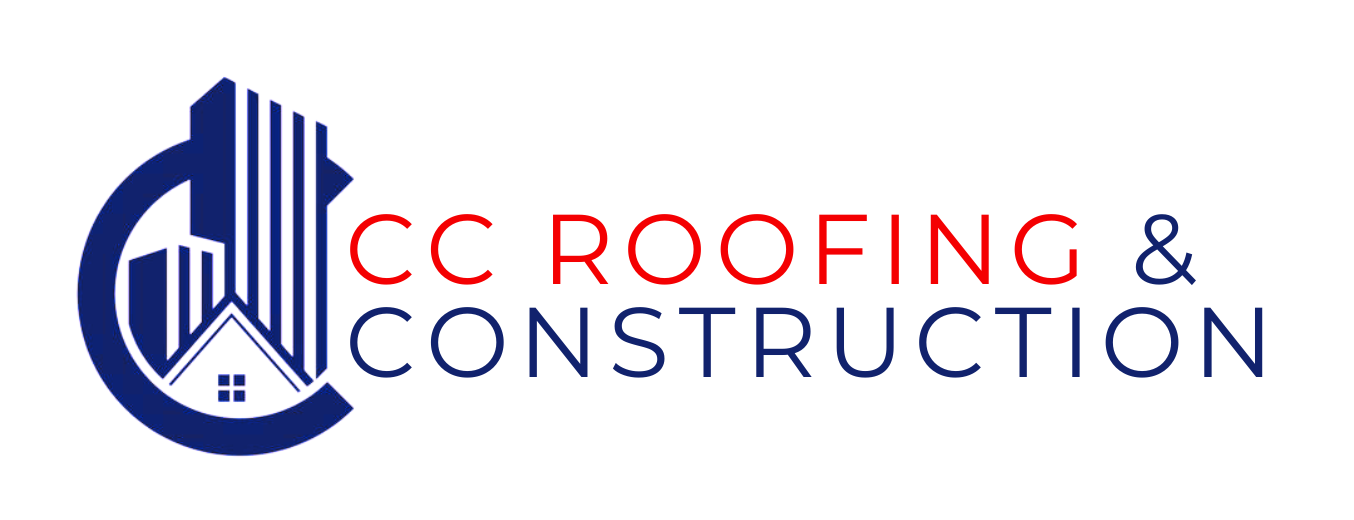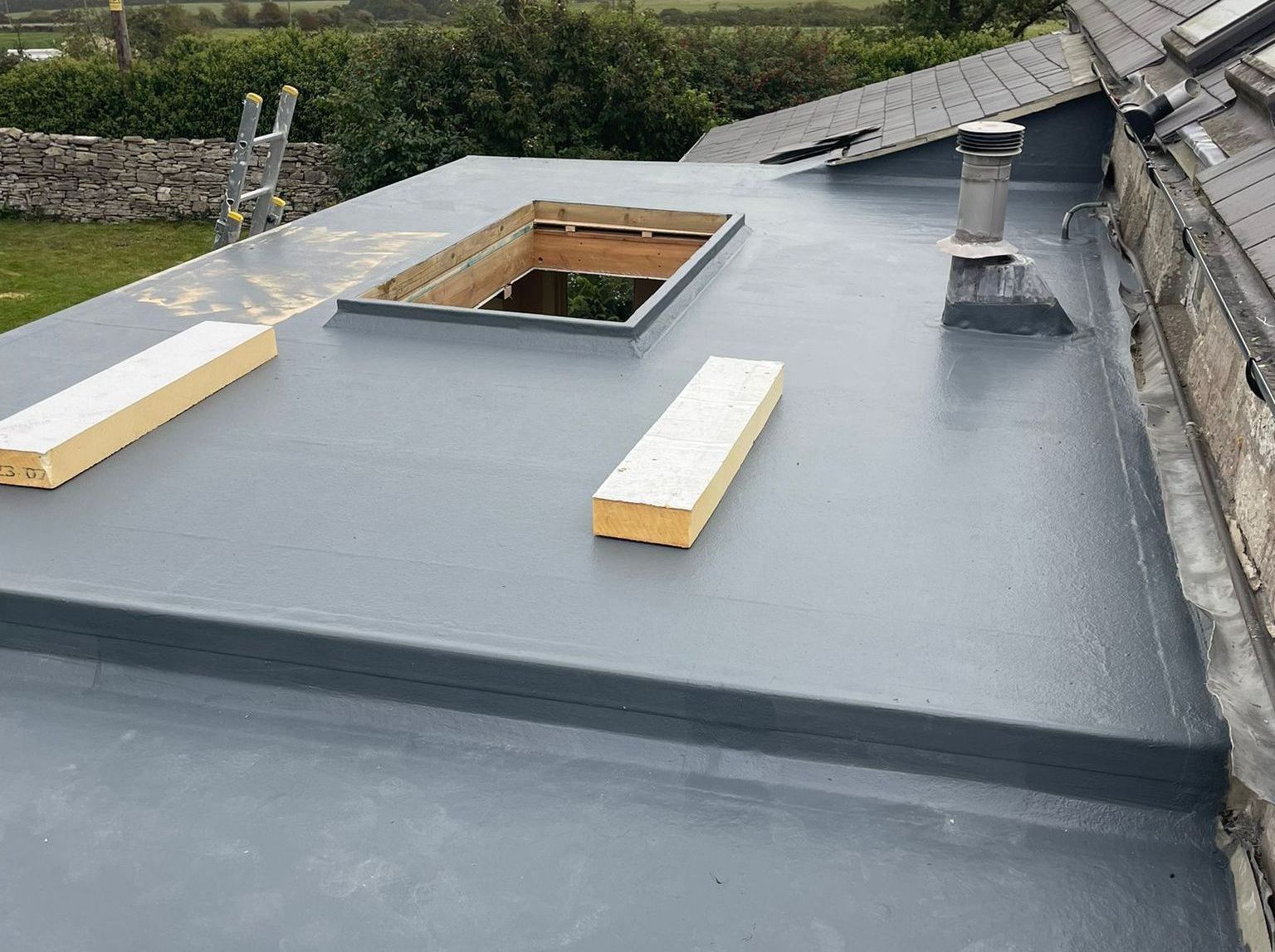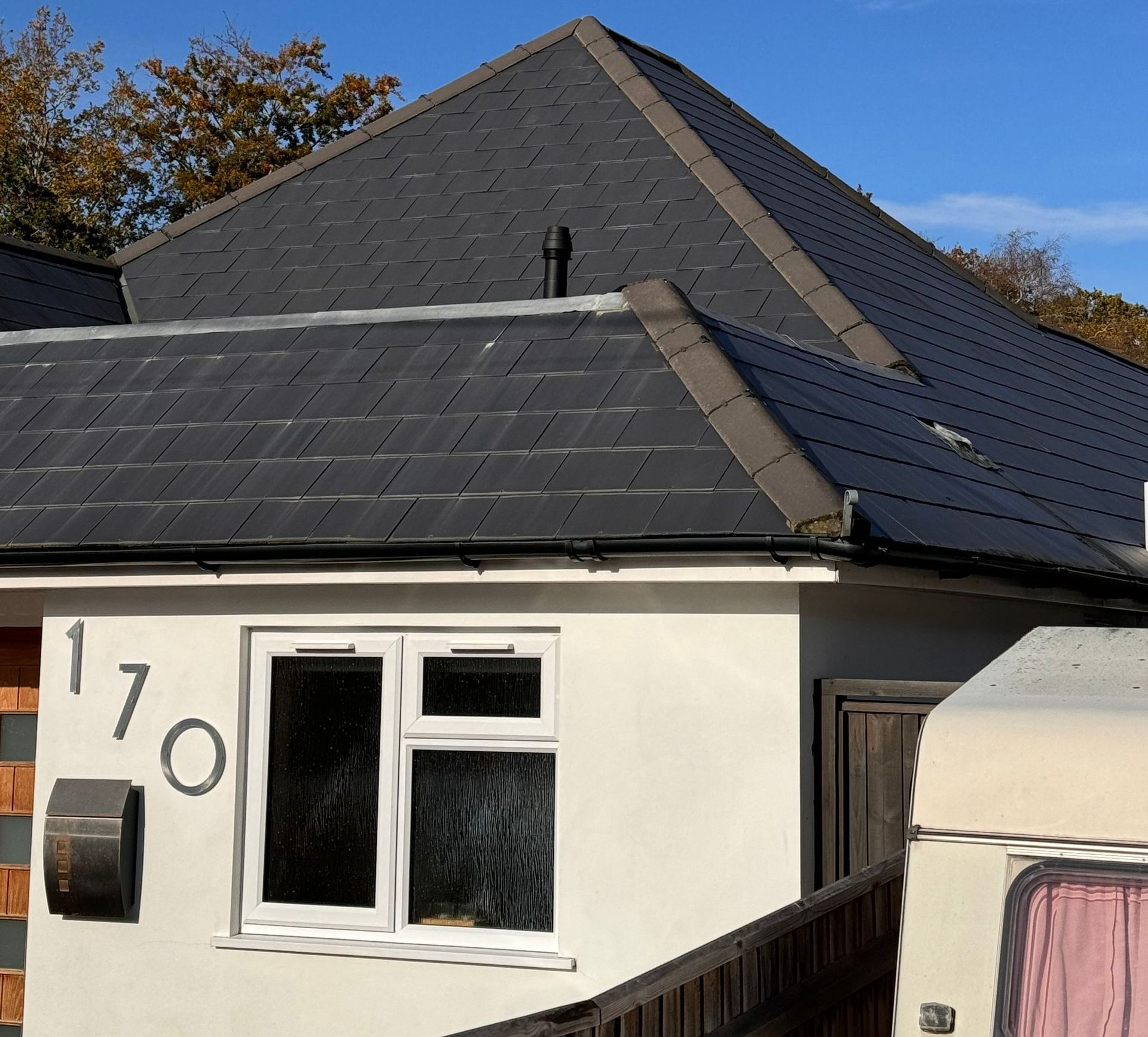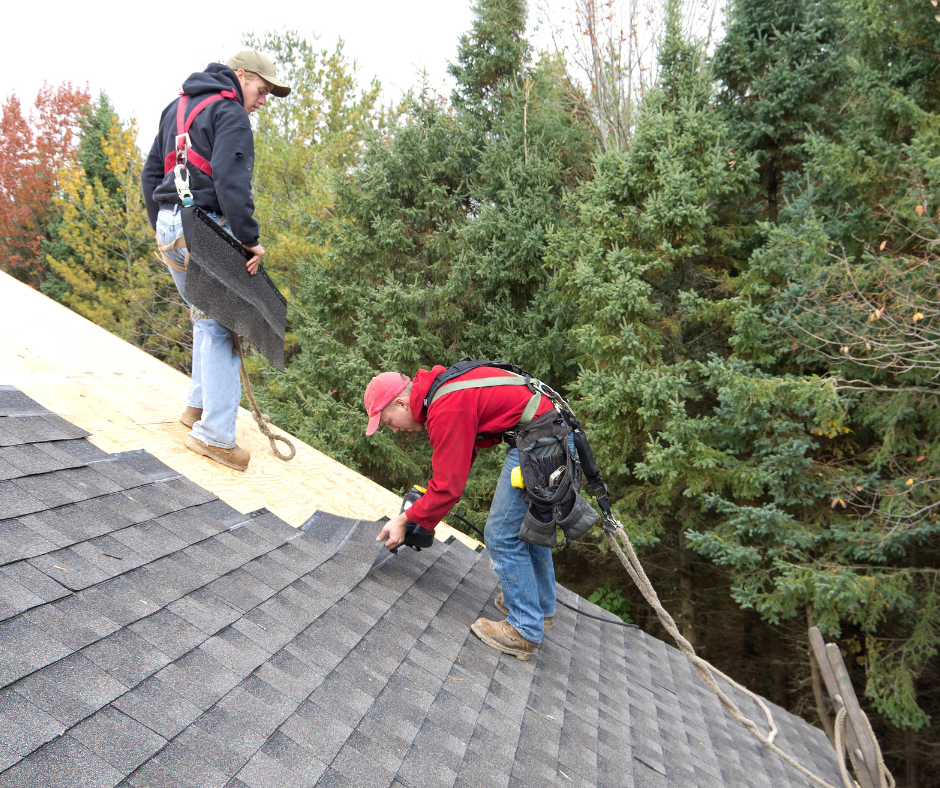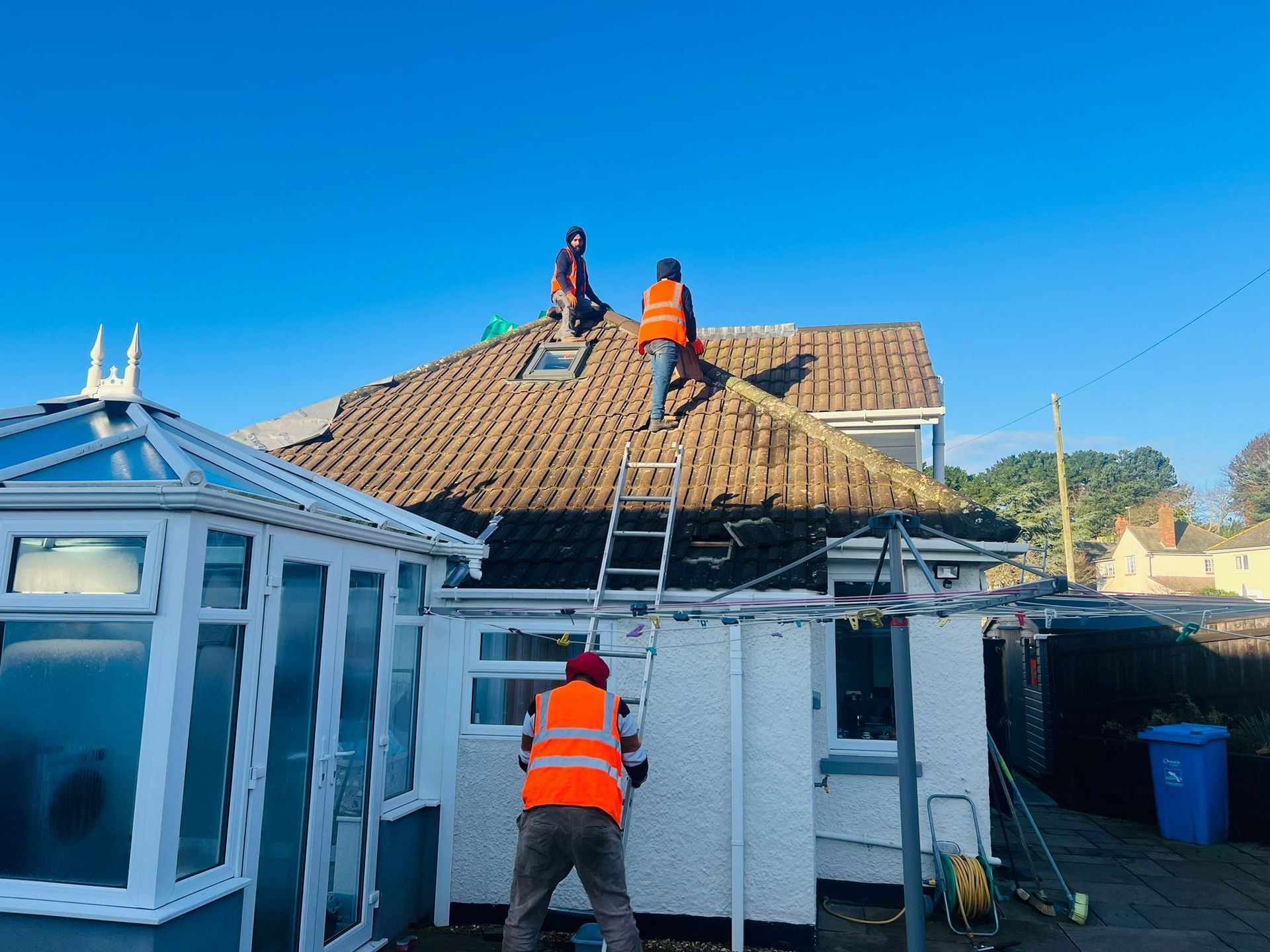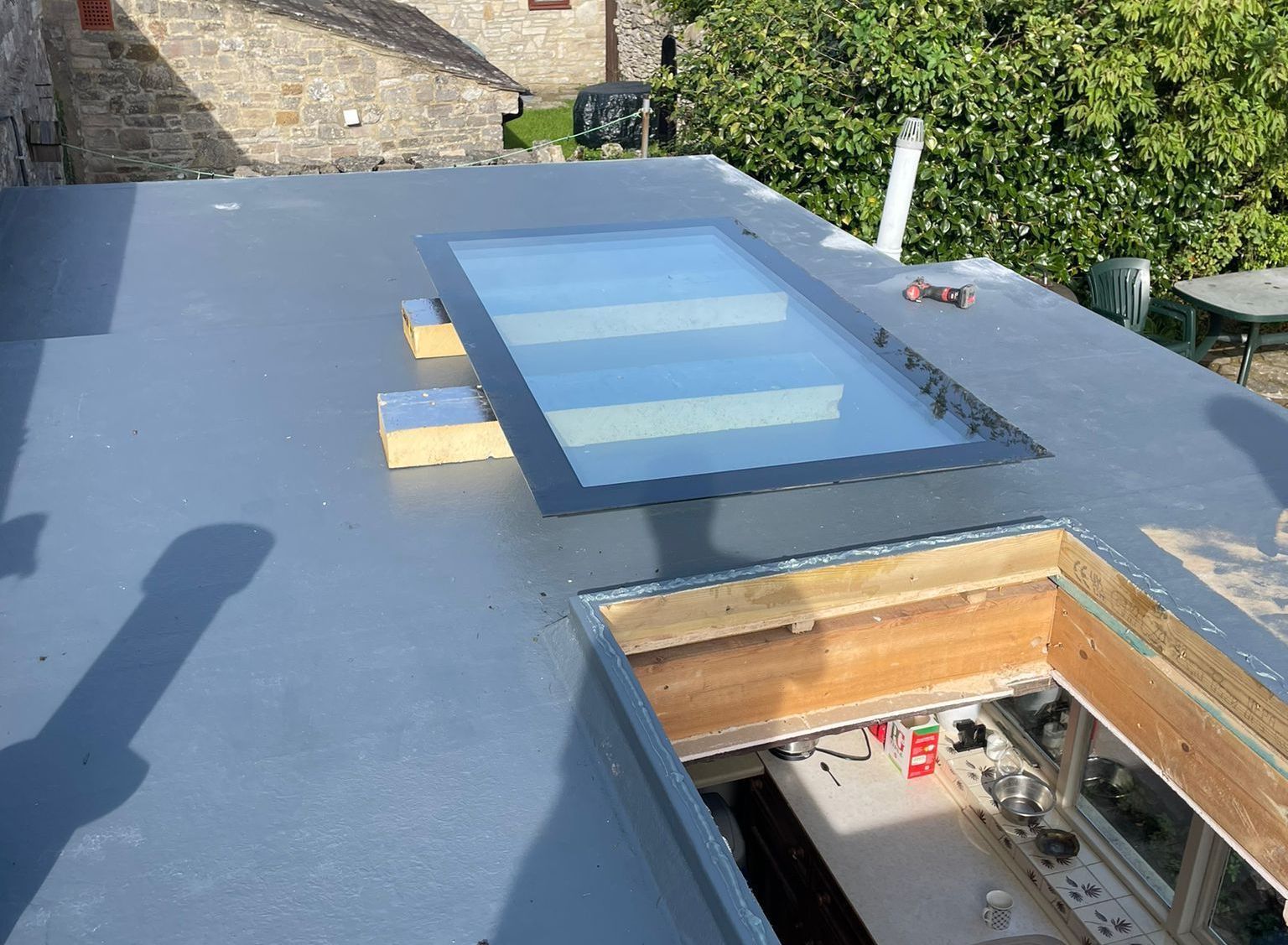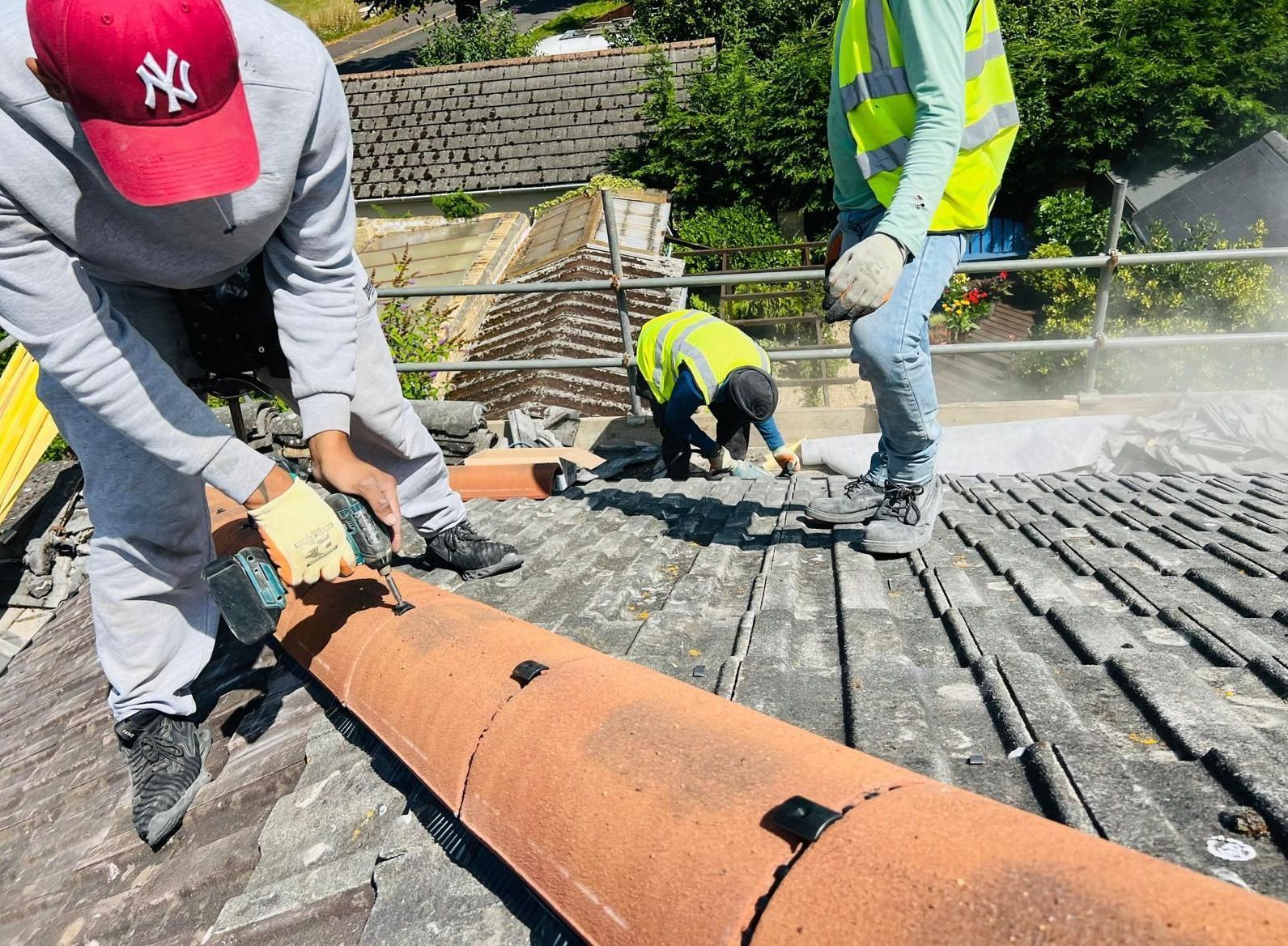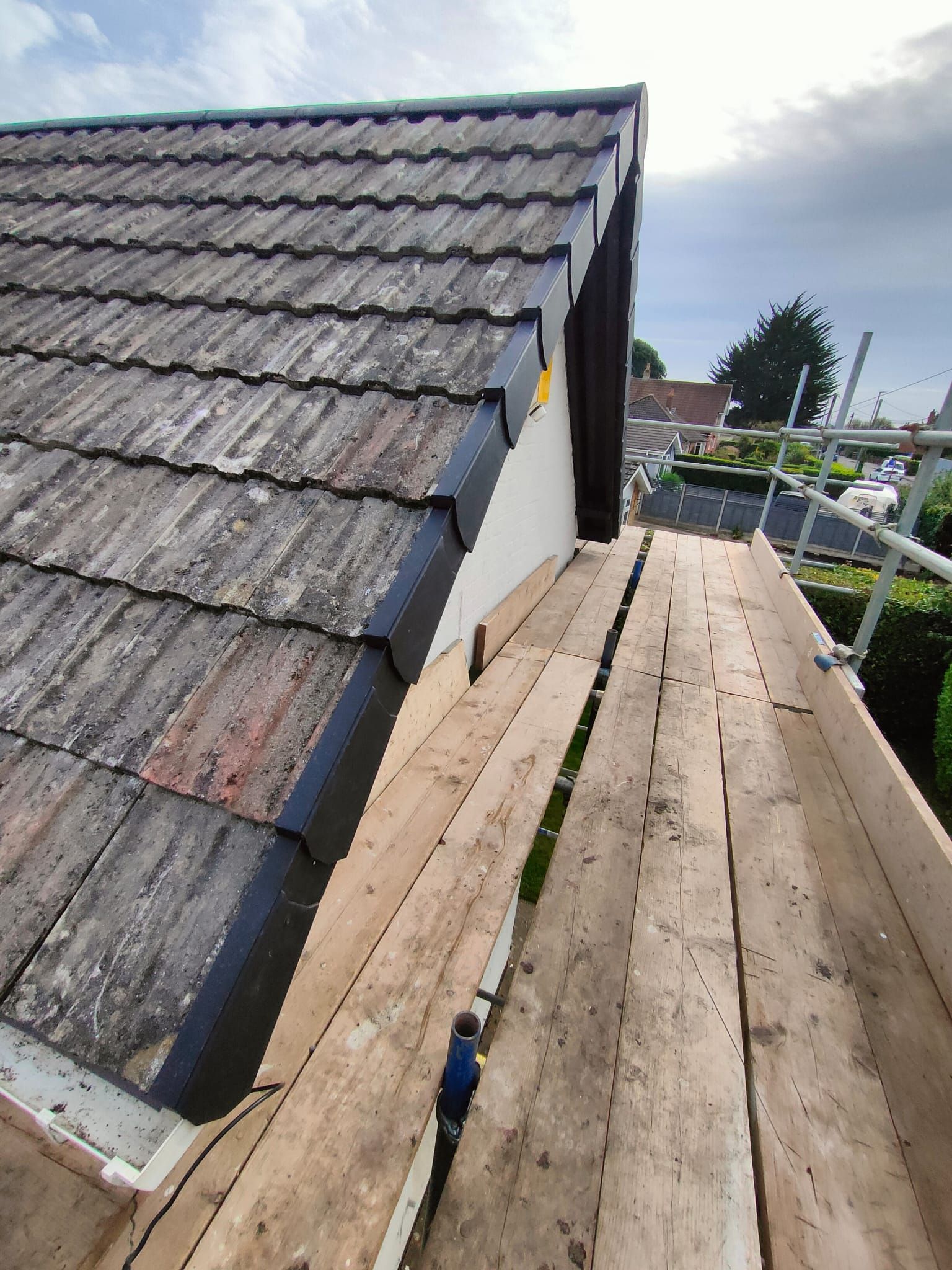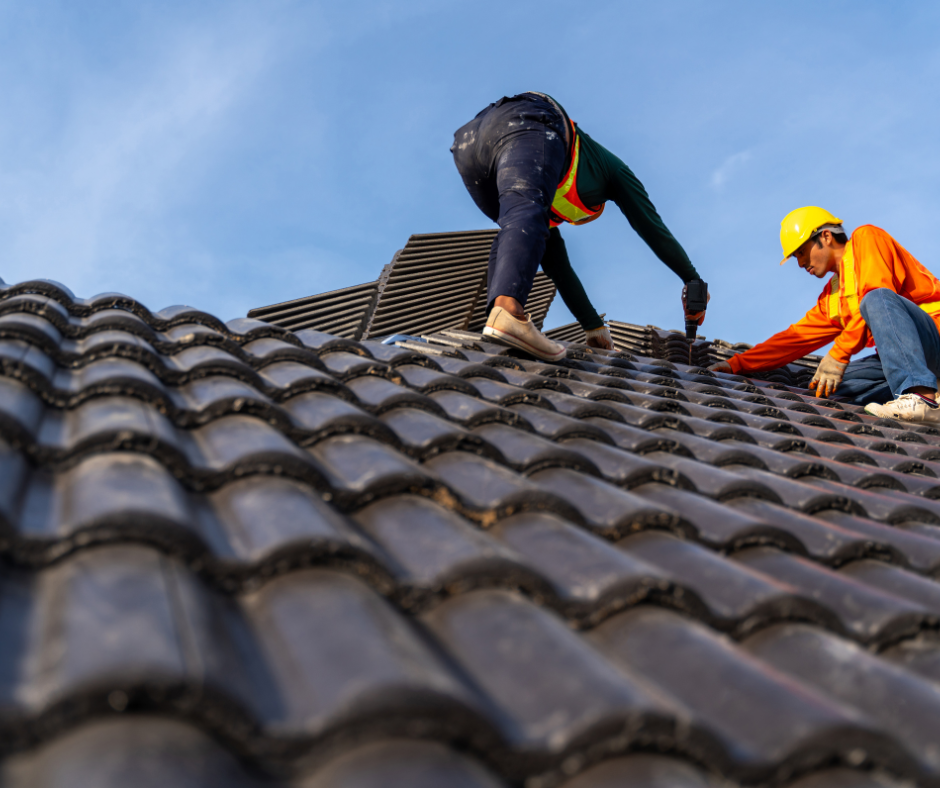Understanding Roof Moss on Your Bournemouth Home: Should You Be Worried?
Introduction: The Common Sight of Roof Moss in Dorset
Across Bournemouth, Poole, Christchurch, and throughout Dorset, roof moss is a common sight for many homeowners, especially in our often damp, coastal, and sometimes shady environments. While it might just seem like a green covering that affects your home's appearance, if left untreated, roof moss can lead to some serious and costly problems for your property. This article from CC Roofing and Construction addresses whether roof moss is a real cause for concern for Dorset homeowners, and if so, how to safely and effectively remove it without causing damage to your roof.
“While moss might appear harmless, it can severely reduce the lifespan of your roof — especially in coastal regions like Bournemouth, where humidity is higher year-round.”
In a hurry? Skip to the summary — TL;DR: Got Moss on Your Bournemouth Roof? Here's What to Do!
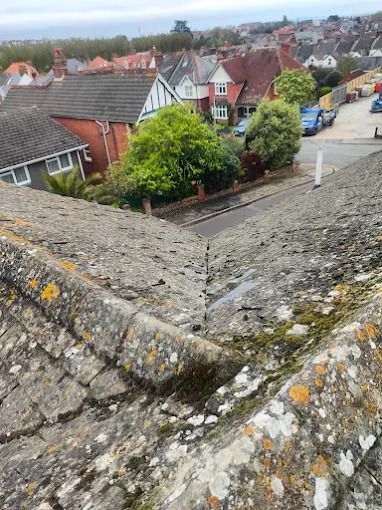
Want to know what causes roof moss, the potential damage it can inflict on your Bournemouth home, and the best ways to remove and prevent it? If you're concerned about moss on your property, this guide will help you understand the risks and the best solutions to protect your home and your roof.
What Causes Roof Moss to Grow on Bournemouth Properties?
Moss absolutely thrives in damp, shaded conditions, making UK roofs – and particularly those in coastal or leafy parts of Dorset – highly susceptible due to our frequent rainfall and relatively humid climate. The following factors are prime contributors to roof moss growth:
- Lack of Direct Sunlight: Roofs, or sections of roofs, that are shaded by large trees, nearby taller buildings, or are north-facing, provide the perfect cool, damp environment for moss to flourish. Without regular, direct sunlight to dry them out, roof tiles remain moist for longer, allowing moss spores to take hold and spread.
- Moisture Retention on Roof Tiles: Moss itself acts like a sponge, absorbing and retaining significant amounts of water. This creates a persistently damp micro-environment directly on your roof surface. This is particularly problematic during the autumn and winter months in Bournemouth when rain is frequent and temperatures drop.
- Poor Roof Drainage or Blocked Gutters: Blocked or inefficient guttering systems are a major contributor to roof moss. If rainwater cannot drain away properly, it can overflow back onto the roof or keep the roof edges perpetually damp, creating an ideal breeding ground for moss and other organic growth like algae and lichens.
Age and Material of Your Roof Tiles: Older roofs, particularly those with porous tile materials such as some types of concrete or aged clay tiles, are often more susceptible to moss growth. As these tiles age and their original protective surface degrades, they can absorb more moisture, further accelerating moss spread and establishment.
Is Roof Moss Actually Dangerous for Your Bournemouth Home?
Many homeowners in Dorset initially believe that moss growth on their roof is purely an aesthetic issue – something that just makes the house look a bit untidy. However, if left unchecked for extended periods, moss can significantly compromise the integrity and lifespan of your roof. Here are the primary risks associated with roof moss:
- Damage to Roof Tiles (Especially in Winter): Moss holds moisture directly against the roof surface. During cold Dorset weather, this trapped water can freeze and expand. This freeze-thaw cycle exerts pressure on the tiles, leading to cracks, delamination (surface flaking), and general deterioration. Over time, this can result in broken, displaced, or crumbling tiles, creating pathways for leaks into your roof space and home.
- Increased Weight on Your Roof Structure: A significant, dense accumulation of damp moss can add a surprising amount of extra weight to your roof. While this may not be an immediate catastrophic concern for a structurally sound roof, excessive and prolonged moss growth can contribute to unnecessary stress on your roofing structure (rafters, trusses) over the long term.
- Blocked Gutters and Drainage Systems: As moss grows, dies, or is dislodged by wind and rain, clumps of it can fall or be washed into your gutters and drainpipes. This is a very common cause of blockages, leading to rainwater overflowing from the gutters. This overflow can damage fascias, soffits, brickwork, and even lead to water pooling around your home’s foundations, potentially causing damp issues or subsidence over time.
Reduced Roof Lifespan and Premature Wear: Constant exposure to moisture and the presence of organic growth can cause your roof materials to wear out faster than expected. If moss growth is severe and persistent, it might necessitate costly roof repairs or even a full roof replacement on your Bournemouth property much sooner than would normally be anticipated.

Keeping your roof moss-free can save you thousands. This cost comparison shows that regular moss removal and roof maintenance are far more affordable than a full roof replacement due to moss damage. Data source: Checkatrade.
How to Remove Roof Moss Safely from Your Dorset Roof
“DIY moss removal may seem tempting, but it’s easy to damage your roof without the proper tools, chemicals, or training.”
If you’ve noticed moss growth on your roof in Bournemouth or elsewhere in Dorset, early intervention is definitely key to preventing more serious problems. However, it's crucial to understand that improper removal techniques can potentially do more harm to your roof than the moss itself. Here’s how to approach moss removal safely:
- Manual Removal (with care): For light moss growth, it can sometimes be gently removed using a long-handled, soft-bristled brush or a purpose-made telescopic scraper. It's important to work from the ridge downwards and avoid applying too much pressure, which could dislodge or damage tiles. Never use stiff wire brushes, as these can scrape away the protective surface of your tiles. Avoid walking directly on the roof unless you are trained and have appropriate safety equipment, as this can also damage tiles and is dangerous.
- Professional Roof Cleaning Solutions (Biocidal Washes): Specialist roof cleaning solutions that contain biocidal agents can be applied to kill the moss, algae, and lichens, making them easier to remove and helping to prevent or slow down regrowth. When considering chemical treatments, ensure they are specifically designed for roof cleaning, are safe for your particular tile material (e.g., clay, concrete, slate), and do not contain harsh acids or bleach that could degrade roof surfaces or harm surrounding plants.
- Pressure Washing – Use with Extreme Caution (or Not at All): Some people are tempted to use pressure washers to remove roof moss quickly. However, this method should be approached with extreme caution, or preferably avoided altogether on most pitched roofs. High-pressure water jets can easily damage tiles (especially older ones), strip away their protective granular coating, force water underneath the tiles into the roof structure leading to leaks, or damage the pointing on ridge tiles. If considering this, always seek professional advice from an experienced Bournemouth roofer first.
Professional Roof Cleaning Services: For a thorough, safe, and effective moss removal job, it is nearly always best to hire experienced professionals like CC Roofing and Construction. Our Bournemouth-based roofing team utilises industry-approved methods, appropriate equipment, and safe working practices to remove moss effectively while preserving the integrity and health of your roof.
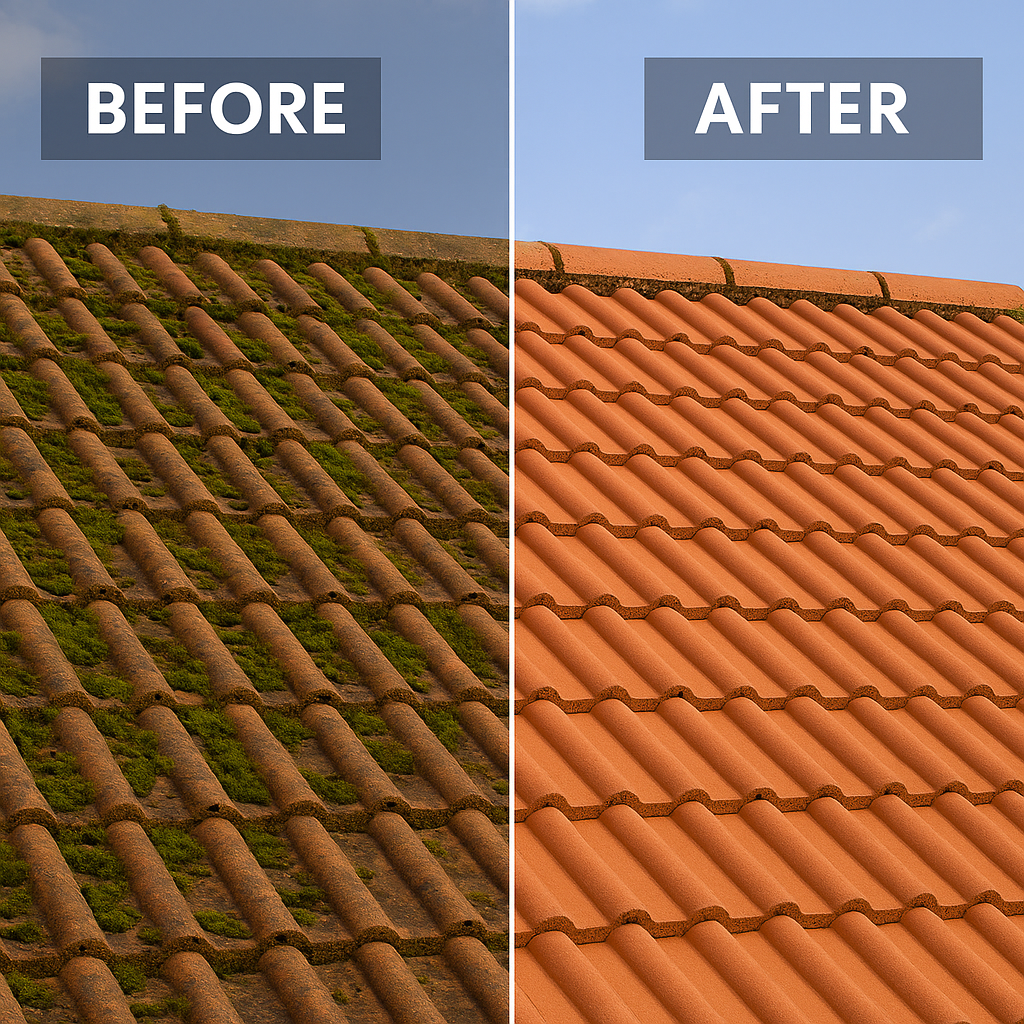
Preventing Roof Moss Growth on Your Bournemouth Property
Once existing moss has been removed from your Dorset roof, taking preventative measures can significantly help reduce the chance of it quickly returning:
- Trim Overhanging Tree Branches: Reduce shade on your roof by regularly pruning back nearby trees and large shrubs. This allows more sunlight to reach the tiles, helping them to dry out more quickly after rain and making the environment less hospitable for moss.
- Improve Roof and Loft Ventilation: Good loft ventilation can help to regulate the temperature of the roof space and reduce moisture build-up on the underside of the roof deck, which can indirectly contribute to conditions less favourable for moss growth on the exterior.
- Consider Installing Zinc or Copper Strips (Ridge Wires): Zinc and copper are natural biocides that can help prevent moss, algae, and lichen formation. Installing strips or wires of these metals along the ridge lines of your roof can provide long-term protection. As rainwater washes over the metal, it releases minute metallic ions that are carried down the roof surface, inhibiting organic growth.
Regular Roof Maintenance and Gutter Clearing: Routine roof inspections (even a visual check from ground level with binoculars) and periodic professional cleaning can help detect the early signs of moss and stop it from becoming a major issue. Crucially, gutters and drainpipes should be regularly cleared of leaves and debris (at least twice a year) to ensure proper drainage and prevent water build-up on the roof.
Should You Hire a Professional Bournemouth Roofer for Moss Removal?
While some homeowners in Bournemouth or Poole might attempt DIY moss removal, particularly for very small, accessible areas, professional roof cleaning services offer several significant benefits:
- Expert Knowledge & Experience: Professional Dorset roofers like CC Roofing and Construction understand the different types of roof tiles and materials used in the Bournemouth area and know the safest and most effective cleaning methods for each.
- Safety Assurance: Working at height on a roof carries inherent risks. Professionals have the correct safety equipment (e.g., scaffolding, harnesses), training, and insurance to carry out the work safely.
- Longevity of Results & Guarantees: Specialist treatments and professional application methods often provide more effective and longer-lasting moss prevention than DIY efforts. Reputable companies may also offer a guarantee on their work.
- Damage Prevention: Professionals are less likely to inadvertently damage your roof tiles or structure during the cleaning process.
“Hiring a qualified roofer in Bournemouth ensures your moss problem is handled safely and doesn’t come back.”
At CC Roofing and Construction, we offer expert roof moss removal and comprehensive roof maintenance services for homeowners across Bournemouth, Poole, Christchurch, and the surrounding Dorset region. Whether you need a one-time thorough cleaning or ongoing preventative maintenance, our experienced team is equipped to handle all your roofing concerns.
Concerned About Moss on Your Bournemouth Roof? Don’t Delay!
Roof moss might appear harmless at first glance, but as we've seen, it can lead to serious and costly roofing issues if neglected. From weakening your roof tiles and blocking your gutters to reducing the overall lifespan of your roof, moss should never be ignored. By understanding the causes and risks, homeowners in Bournemouth and Dorset can take the right approach to remove and prevent moss growth effectively.
If you’re concerned about moss on the roof of your Bournemouth home, don’t wait until it causes expensive damage or leaks. Contact CC Roofing and Construction today for expert moss removal, professional roof cleaning, and comprehensive roof maintenance services. Our friendly, local Bournemouth team is ready to help protect your home and ensure your roof remains in top condition for years to come.
TL;DR:
Got Moss on Your Bournemouth Roof? Here’s What to Do!
Moss on your roof in Bournemouth or Dorset isn't just ugly; it can cause real damage over time.
- Why it grows: Damp, shade, blocked gutters, and old porous tiles make perfect homes for moss.
- The Danger: Moss holds water, which can freeze and crack tiles in winter. It adds weight, blocks gutters (leading to overflows and foundation issues), and shortens your roof's life.
- Getting Rid of It:
- Gentle brushing for light moss (be careful!).
- Professional roof cleaning solutions (biocides) are effective.
- Pressure washing? Very risky for tiles – get expert advice first or avoid.
- Best Bet: Call professional Bournemouth roofers like CC Roofing and Construction for safe, effective removal.
- Stopping it Coming Back: Trim trees, keep gutters clear, consider zinc/copper strips, and get regular roof checks.
Basically: Don't ignore roof moss on your Bournemouth home! It can lead to expensive problems. CC Roofing and Construction can safely remove it and help you keep it away.
Contact us for a free quote.

